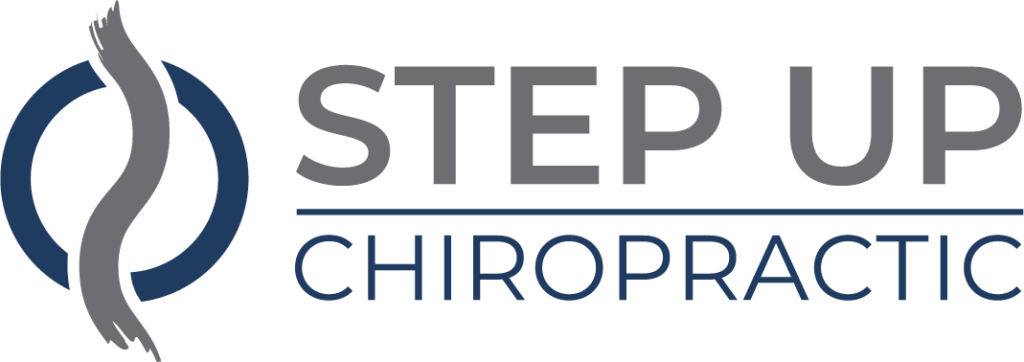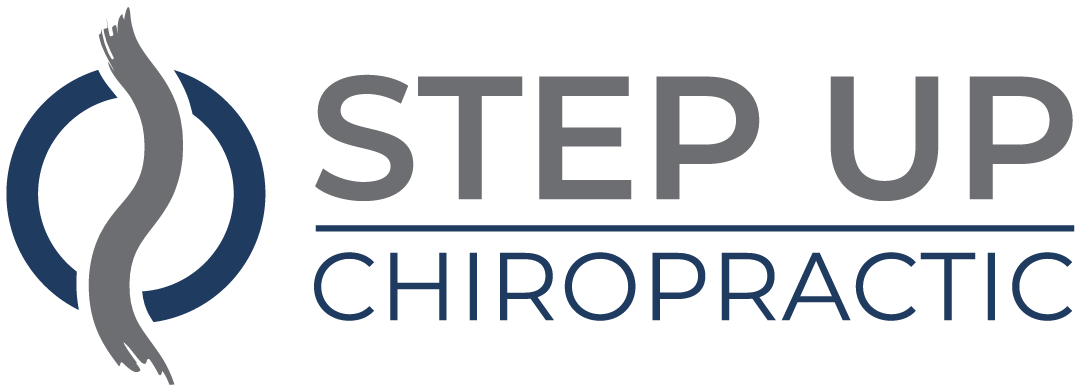If you're looking to elevate your athletic performance, integrating alternative techniques might be the key. Practices like mindfulness and visualization can sharpen your focus, while recovery methods such as cryotherapy and acupuncture help you bounce back faster. You might also find that functional movement training enhances your agility and strength. But what about the role of nutrition and sound therapy in this equation? Exploring these facets could reveal surprising insights that may transform your approach to training.
Mindfulness and Meditation
Athletes often find that incorporating mindfulness and meditation into their training routines greatly enhances their performance. By focusing on the present moment, you can sharpen your concentration, manage stress, and boost your overall mental resilience. Mindfulness helps you remain aware of your thoughts and feelings without judgment, allowing you to respond to challenges more effectively.
To start, set aside a few minutes each day to practice mindfulness. Find a quiet space where you won't be disturbed, and sit comfortably. Close your eyes, take a few deep breaths, and bring your attention to your breath. Notice how it feels as you inhale and exhale.
Whenever your mind wanders, gently redirect your focus back to your breathing. This simple practice can cultivate a sense of calm, helping you to stay focused during intense training sessions or competitions.
Incorporating meditation into your routine can further enhance your mental game. Try guided meditations specifically designed for athletes, which often focus on performance enhancement and stress reduction.
Regular meditation sessions can improve your ability to maintain composure under pressure, allowing you to perform at your best when it matters most.
Visualization Techniques
One powerful tool for enhancing athletic performance is visualization techniques. These mental exercises allow you to picture yourself successfully executing your sport, which can greatly improve your physical performance. By vividly imagining each movement, you engage both your mind and body, creating a stronger connection that translates into real-life actions.
To start, find a quiet space where you can relax and focus. Close your eyes and take deep breaths to center yourself. Now, visualize your upcoming performance or practice. Picture the environment, the sounds around you, and the sensations you'll feel as you compete. Imagine every detail – from your warm-up routine to the final moments of your event. The more specific you are, the more effective your visualization will be.
As you visualize, think about the emotions you'll experience. Feel the adrenaline rush, the satisfaction of executing perfect techniques, and the joy of achieving your goals. This emotional connection reinforces your mental image, making it more impactful.
Regular practice of visualization can boost your confidence and reduce anxiety before competitions. When you mentally rehearse your performance, you're training your brain to react positively under pressure. Over time, this can lead to improved focus, better decision-making, and enhanced overall performance in your sport.
Incorporate visualization techniques into your training regimen. You'll not only sharpen your mental skills but also create a winning mindset that drives you toward success.
Cryotherapy Benefits
After honing your mental focus with visualization techniques, exploring physical recovery methods like cryotherapy can further enhance your athletic performance. Cryotherapy involves exposing your body to extremely cold temperatures for a short period, typically in a chamber or localized treatment. This method has gained popularity among athletes for its numerous benefits.
One of the most significant advantages of cryotherapy is its ability to reduce inflammation. After intense training or competition, your muscles can swell and become sore. By subjecting your body to cold, you constrict blood vessels, which helps limit inflammation and speeds up recovery. You might find that your post-workout soreness diminishes, enabling you to train harder and more frequently.
Cryotherapy also boosts your mood and energy levels. The cold exposure triggers the release of endorphins, the feel-good hormones. You'll likely notice an improvement in your overall sense of well-being, making it easier to stay motivated.
Plus, increased energy levels can translate to more productive workouts.
Additionally, cryotherapy can enhance sleep quality. Quality rest is essential for peak performance, and the recovery process initiated by cold therapy may lead to deeper sleep cycles. If you wake up feeling more refreshed, you're likely to perform better both physically and mentally.
Incorporating cryotherapy into your routine can give you a competitive edge. Whether you're a seasoned athlete or just starting, this innovative recovery method can help you push your limits and achieve your performance goals.
Floatation Therapy Insights
Many athletes are discovering the powerful benefits of floatation therapy as a recovery tool.
This innovative technique involves floating in a sensory deprivation tank filled with Epsom salt-infused water, allowing you to experience deep relaxation and enhanced recovery.
If you haven't tried it yet, you might be missing out on some significant advantages.
Here are three key benefits of floatation therapy you should consider:
1. Reduced Muscle Tension: The buoyancy of the water relieves pressure on your joints and muscles.
This can lead to a decrease in soreness and tension after intense workouts, helping you bounce back faster.
2. Improved Sleep Quality: Many athletes report better sleep after floatation sessions.
The calming environment encourages deep relaxation, making it easier for you to drift into a restful sleep, which is essential for recovery and performance.
3. Mental Clarity and Focus: Floatation therapy can provide a space for mental rejuvenation.
As distractions fade away, you can concentrate on your thoughts and visualize your goals, enhancing your mental game.
Nutritional Strategies
To access your full athletic potential, you can't overlook the importance of proper nutrition. Fueling your body with the right nutrients can enhance your performance, support recovery, and keep your energy levels high. Start by focusing on a balanced diet rich in whole foods. Incorporate lean proteins, complex carbohydrates, healthy fats, and plenty of fruits and vegetables. These components work together to provide the energy and nutrients your body needs to perform at its best.
Timing matters too. Eat a well-rounded meal two to three hours before your workout, emphasizing carbs for energy and protein for muscle support. If you're training for extended periods, consider a small snack containing carbs and protein about 30 minutes prior to your session.
After your workout, aim to refuel within 30 minutes. A combination of protein and carbs will jumpstart recovery, helping to replenish glycogen stores and repair muscle tissue.
Hydration is another vital aspect of your nutritional strategy. Dehydration can severely impact your performance. Confirm you're drinking enough water throughout the day, and don't forget to hydrate before, during, and after your workouts. Depending on the intensity and duration of your exercise, electrolyte-rich beverages can also help maintain your body's balance.
Finally, consider personalizing your nutrition plan based on your specific goals, body type, and activity level. Consulting with a registered dietitian can provide tailored insights that align with your athletic aspirations.
Breathwork Practices
Breathwork practices can greatly enhance your athletic performance by improving oxygen flow, reducing stress, and increasing mental clarity. By incorporating these techniques into your training routine, you'll notice significant improvements in both your physical and mental game.
Here's how you can get started:
- Diaphragmatic Breathing: This technique involves breathing deeply into your diaphragm instead of shallowly into your chest. To practice, sit or lie down comfortably. Inhale through your nose for a count of four, allowing your belly to rise. Hold for a count of four, then exhale through your mouth for a count of six. Repeat this for 5-10 minutes to increase your lung capacity and oxygen intake.
- Box Breathing: This method is great for reducing anxiety and enhancing focus. Inhale through your nose for a count of four, hold for four, exhale for four, and hold again for four. Completing several cycles of this can help center your mind before a competition or intense workout.
- Alternate Nostril Breathing: This technique balances your body's energy and calms your mind. Use your right thumb to close your right nostril, inhale through your left nostril, then close the left nostril with your ring finger, exhale through the right nostril. Switch sides and repeat. Doing this for a few minutes can help you feel more grounded and focused.
Integrating these breathwork practices into your routine can lead to enhanced performance and a greater sense of well-being, both on and off the field.
Acupuncture for Recovery
Recovery is just as important as training when it comes to maximizing athletic performance, and acupuncture can play a significant role in that process. This ancient practice involves inserting thin needles into specific points on your body, helping to stimulate energy flow and promote healing. If you're feeling sore or fatigued after intense workouts, acupuncture can help alleviate those symptoms.
When you push your body to its limits, it can result in muscle tension and inflammation. Acupuncture targets these areas, encouraging blood circulation and reducing swelling. You might find that this not only speeds up your recovery time but enhances your overall performance.
By incorporating acupuncture into your routine, you can experience improved flexibility, reduced pain, and even a lower risk of injury. Many athletes report that acupuncture helps with mental clarity and relaxation, allowing you to recover emotionally as well.
It's not just about the physical aspect; your mental state plays an essential role in how you perform. By reducing stress and anxiety through acupuncture, you can return to training with a refreshed mindset.
If you're new to acupuncture, start by consulting a licensed practitioner who understands your athletic needs. Discuss your training schedule and any specific issues you're facing. This personalized approach guarantees you receive the most benefit.
Integrating acupuncture into your recovery strategy could be the key to releasing your full athletic potential. Don't underestimate the power of this holistic technique—it might just be what you need to take your performance to the next level.
Functional Movement Training
Functional movement training is essential for athletes looking to enhance their performance and prevent injuries. This approach focuses on exercises that mimic real-life movements, helping you develop strength, flexibility, and coordination. By incorporating functional movements into your training regimen, you can improve your overall athletic performance while reducing the risk of injury.
Here are three key benefits of functional movement training:
- Improved Balance and Stability: By performing exercises that engage multiple muscle groups, you'll enhance your balance and stability, which are vital for any sport. This leads to better control during dynamic movements.
- Enhanced Strength: Functional training helps you build strength in a way that translates directly to your sport. You'll train your muscles to work together, improving your overall power and efficiency.
- Injury Prevention: Many injuries stem from poor movement patterns. By focusing on functional movements, you'll identify and correct these patterns, reducing your risk of injury during competition or training.
To get started, consider incorporating exercises like squats, lunges, and kettlebell swings into your workouts. These movements not only help you build functional strength but also enhance your agility and endurance.
Chiropractic Adjustments
Chiropractic adjustments can greatly enhance your joint mobility, making it easier to perform at your best.
By incorporating these adjustments into your routine, you'll also implement effective injury prevention strategies.
This proactive approach not only keeps you in the game but also helps you reach your full athletic potential.
Enhanced Joint Mobility
Enhanced joint mobility is vital for maximizing athletic performance, and chiropractic adjustments play an important role in achieving this. When your joints move freely, you improve your range of motion, reduce muscle tension, and increase overall agility.
Here's how chiropractic adjustments can enhance your joint mobility:
- Realignment of Joints: Misalignments can restrict movement and lead to compensation patterns. Chiropractic adjustments help realign your joints, allowing for smoother motion.
- Increased Blood Flow: Adjustments stimulate blood circulation to the affected areas, promoting healing and flexibility in your joints. This increased blood flow can improve your performance during workouts.
- Reduction of Pain: By addressing joint dysfunction, chiropractic care can alleviate pain, enabling you to push your limits without discomfort. This pain-free movement is essential for peak athletic performance.
Incorporating regular chiropractic adjustments into your training regimen can considerably improve your joint mobility.
You'll find that enhanced mobility not only boosts your athletic performance but also your overall quality of life.
Don't underestimate the impact these adjustments can have on your game; consider making them a part of your routine.
Injury Prevention Strategies
When it comes to staying injury-free, incorporating chiropractic adjustments into your routine can be a game changer. These adjustments help align your spine and joints, enhancing your body's overall function and reducing the risk of injuries. Regular sessions with a chiropractor can improve your posture, increase flexibility, and promote better biomechanics, all essential for peak athletic performance.
Incorporating chiropractic care into your training regimen can also alleviate tension and stress in your muscles, which often contributes to injuries. By addressing misalignments early on, you can prevent small issues from developing into significant problems that sideline you for weeks.
Moreover, chiropractors can provide tailored advice on stretches, exercises, and recovery techniques specific to your sport. This personalized approach not only aids in injury prevention but also guarantees your body is primed for maximum performance.
Don't underestimate the benefits of chiropractic adjustments. By making them a regular part of your routine, you're investing in your long-term health and athletic longevity.
Sound Therapy Applications
Sound therapy applications have increasingly gained attention in the world of athletics, offering innovative ways to boost performance and recovery. This method uses specific sound frequencies to enhance physical and mental states, helping you reach your peak potential.
Here's how you can incorporate sound therapy into your training regimen:
1. Binaural Beats: This technique involves listening to two slightly different frequencies in each ear, creating a perception of a third frequency. It can help you achieve deeper relaxation or heightened focus, depending on the frequency used.
Try incorporating binaural beats during your warm-up or cool-down sessions to enhance your mental state.
2. Singing Bowls: The resonant tones produced by singing bowls can aid in reducing stress and promoting healing. You might consider using them before a competition or practice to center yourself and calm any pre-performance jitters.
Simply sit quietly and allow the vibrations to wash over you.
3. Music Therapy: Curating a playlist that matches your training intensity can greatly improve motivation and endurance. Upbeat tracks can energize you during high-intensity workouts, while softer tunes can help you focus during recovery sessions.
Experiment with different genres to find what resonates best with you.
Conclusion
By incorporating these alternative techniques into your training routine, you can maximize your athletic performance and reach new heights. Mindfulness, visualization, and proper nutrition sharpen your focus and fuel your body, while recovery methods like cryotherapy and acupuncture help you bounce back faster. Don't forget the power of functional movement training and sound therapy to enhance your workouts. Embrace this holistic approach, and you'll not only improve your performance but also enjoy the journey toward your athletic goals.




